Title : The impact of air pollution on the incidence of respiratory infectious diseases in children in Kosova
Abstract:
Background: Air pollution is a growing public health issue in Kosovo, particularly in urban areas such as Pristina, where particulate matter (PM2.5 and PM10) levels often exceed safe limits. Exposure to elevated levels of air pollution has been linked to an increase in respiratory infections, which are among the leading causes of morbidity and mortality in children worldwide. In Kosovo, the pediatric population is especially vulnerable to the detrimental effects of air pollution, with respiratory diseases contributing significantly to hospital admissions and outpatient visits. This study aims to evaluate the relationship between air pollution and the incidence of respiratory infectious diseases in children, with a particular focus on the role of air pollutants such as PM2.5 and PM10.
Methods: This study utilized retrospective epidemiological data from the National Institute of Public Health of Kosovo (NIPHK), covering the period from 2020 to 2024. The data included the annual incidence of respiratory infections in children under the age of 18, classified by type (viral, bacterial, or mixed). Additionally, air pollution data, specifically concentrations of PM2.5 and PM10, were obtained from the Kosovo Environmental Protection Agency (KEPA) for the same period. Statistical analyses, including correlation and regression modeling, were performed to examine the association between air pollution levels and the rates of respiratory infections. Confounding factors such as seasonal variation, socioeconomic status, and pre-existing health conditions were controlled for in the analysis.
Results: The analysis revealed a significant positive correlation between elevated concentrations of PM2.5 and PM10 and an increased incidence of respiratory infections among children. Higher levels of particulate matter were associated with a notable increase in hospital admissions for acute respiratory infections, particularly in the winter months when pollution levels were highest. Furthermore, the incidence of viral infections, such as influenza and respiratory syncytial virus (RSV), showed a stronger association with air pollution compared to bacterial infections. The data indicated that children living in areas with high levels of air pollution had a 25% higher likelihood of being diagnosed with respiratory infections compared to those in cleaner air regions.
Conclusion: This study provides compelling evidence that air pollution is a significant environmental risk factor for respiratory infections in children in Kosovo. The findings highlight the need for stronger air quality regulations and interventions aimed at reducing particulate matter emissions, particularly in urban centers. Public health strategies should focus on reducing exposure to air pollutants, enhancing respiratory health monitoring, and increasing awareness among parents and caregivers about the risks associated with air pollution. Future research should explore the long-term effects of chronic exposure to air pollution on pediatric respiratory health and investigate potential preventive measures. Keywords



